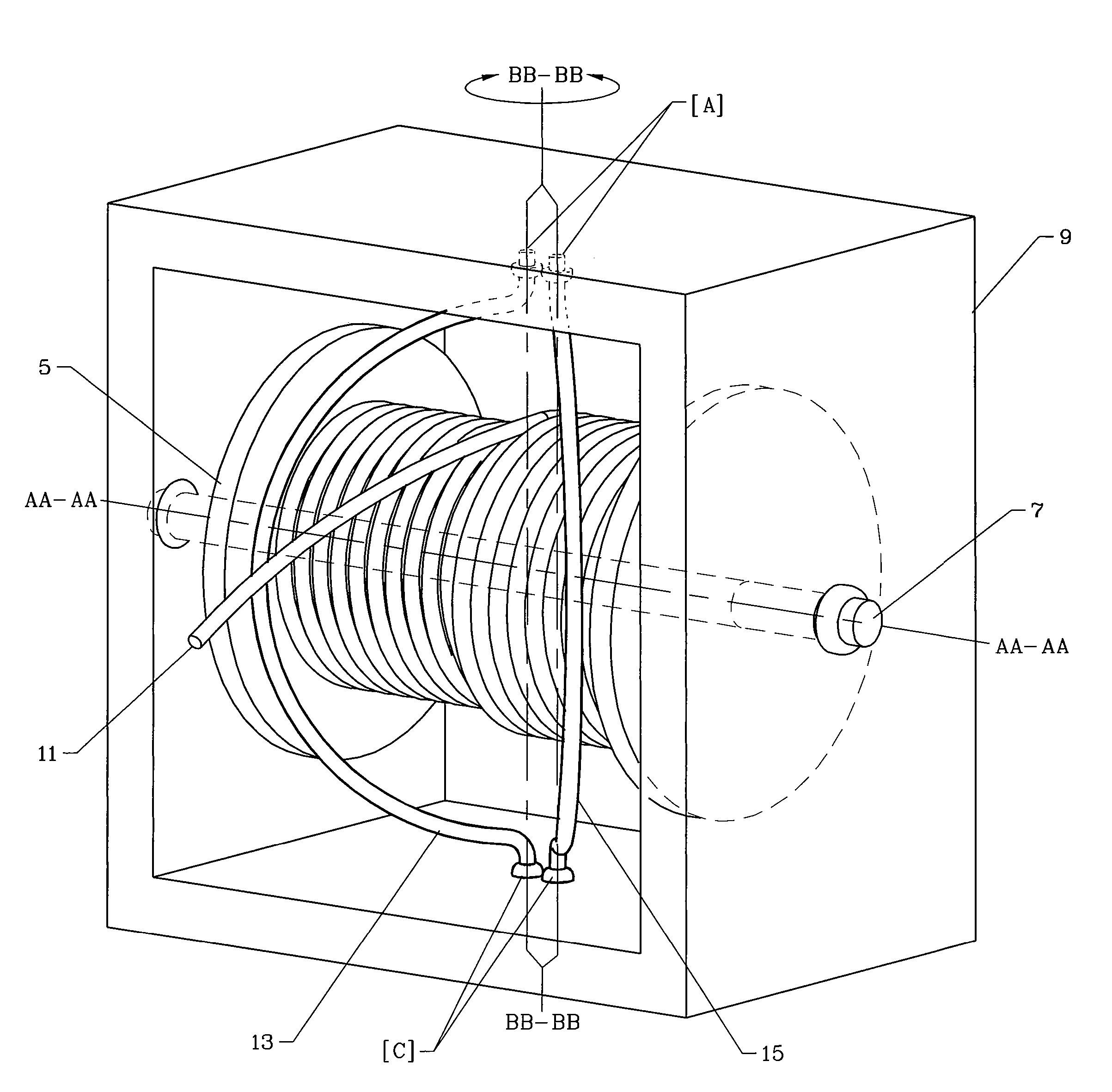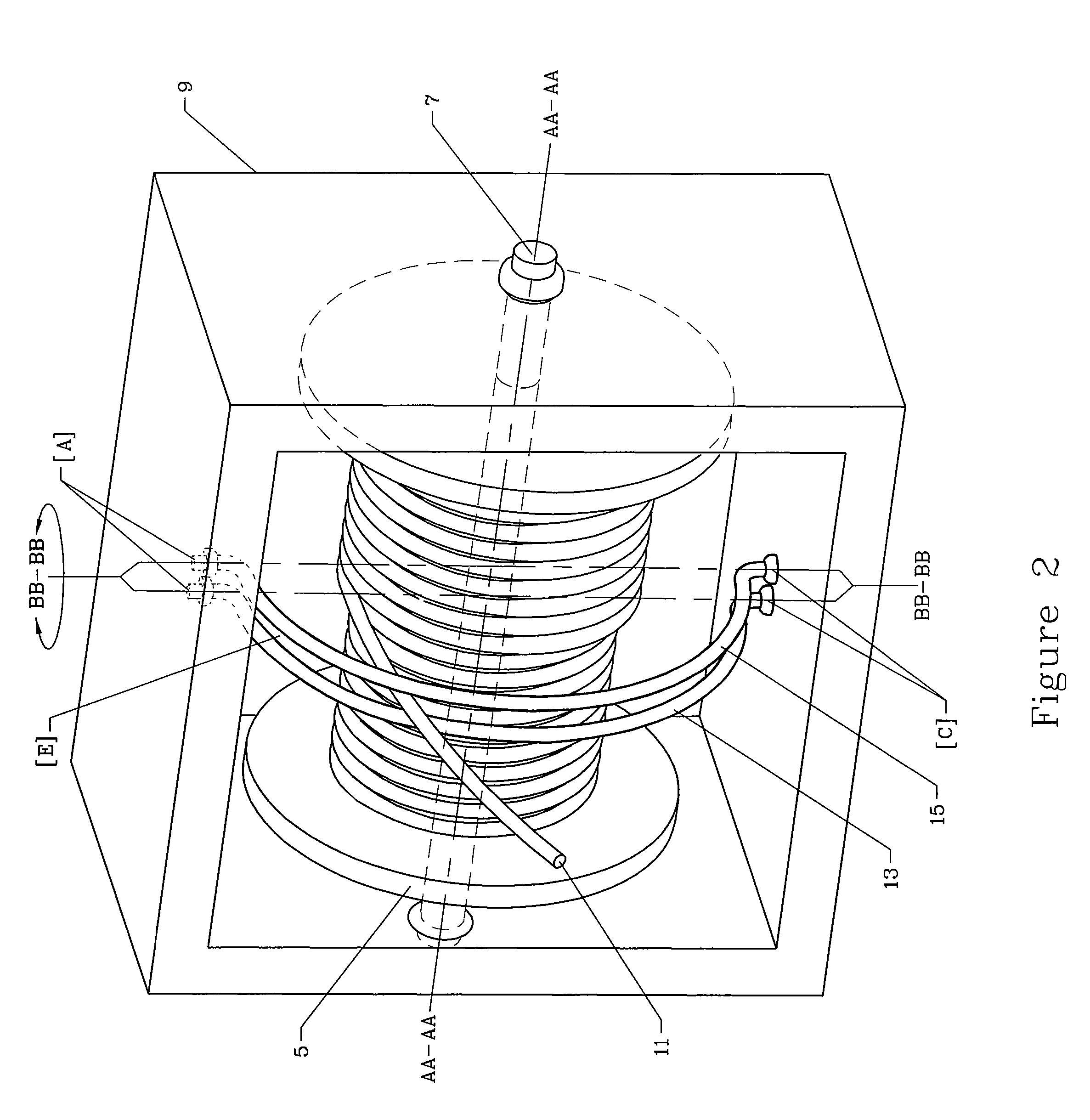Level Wind Mechanism
a level wind and winding technology, applied in the direction of hoisting equipment, fishing, transportation and packaging, etc., can solve the problems of affecting the efficiency of the entire drive mechanism, and affecting the efficiency of the whole drive mechanism
- Summary
- Abstract
- Description
- Claims
- Application Information
AI Technical Summary
Benefits of technology
Problems solved by technology
Method used
Image
Examples
first example
[0062]FIG. 4 is a top view of the present invention with the line guides 13 and 15 pivotally connected to the spool support chassis 9 in at least one position. The line guides 13 and 15 are pivoted together to form the line guide slot E and the line guides 13 and 15, and thus the line 11, are oscillated (about axis BB-BB) to the right-hand axial edge of the spool 5.
[0063]FIG. 5 is a top view of the present invention with the line guides 13 and 15 pivoted together to form the line guide slot E, and showing the line guides 13 and 15 and thus, the line 11 oscillated (about axis BB-BB) back to the left-hand axial edge of the spool 5. Because the line guides 13 and 15 are pivotally supported by the spool support chassis 9, the line guide slot E that is formed between the line guides 13 and 15, travels from the right-hand axial edge of the spool 5 (depicted in FIG. 4) to the left-hand edge of the spool 5 following a path that is arc shaped. Because the line 11 is captured within line gui...
second example
[0088]FIG. 11 is a second example of a top view of the present invention with the line guides 13 and 15 pivoted together to form the line guide slot E and showing the line guides 13 and 15, and thus the line 11 oscillated to the right-hand axial edge of the spool 5.
[0089]FIG. 12 is a top view of the second example of the present invention with the line guides 13 and 15 pivoted together to form the line guide slot E and showing the line guides 13 and 15, and the line 11 oscillated back to the left-hand axial edge of the spool 5. In the second example, the line guides 13 and 15 are pivotally connected to any linear motion device, such that the line guide slot E that is formed between the line guides 13 and 15, travels from the right-hand axial edge of the spool 5 to the left-hand axial edge of the spool 5 (and vice versa) following a linear path. Because the line 11 is captured within the line guide slot E, the line 11 travels from the right-hand axial edge of the spool 5 to the left...
PUM
 Login to View More
Login to View More Abstract
Description
Claims
Application Information
 Login to View More
Login to View More - R&D
- Intellectual Property
- Life Sciences
- Materials
- Tech Scout
- Unparalleled Data Quality
- Higher Quality Content
- 60% Fewer Hallucinations
Browse by: Latest US Patents, China's latest patents, Technical Efficacy Thesaurus, Application Domain, Technology Topic, Popular Technical Reports.
© 2025 PatSnap. All rights reserved.Legal|Privacy policy|Modern Slavery Act Transparency Statement|Sitemap|About US| Contact US: help@patsnap.com



